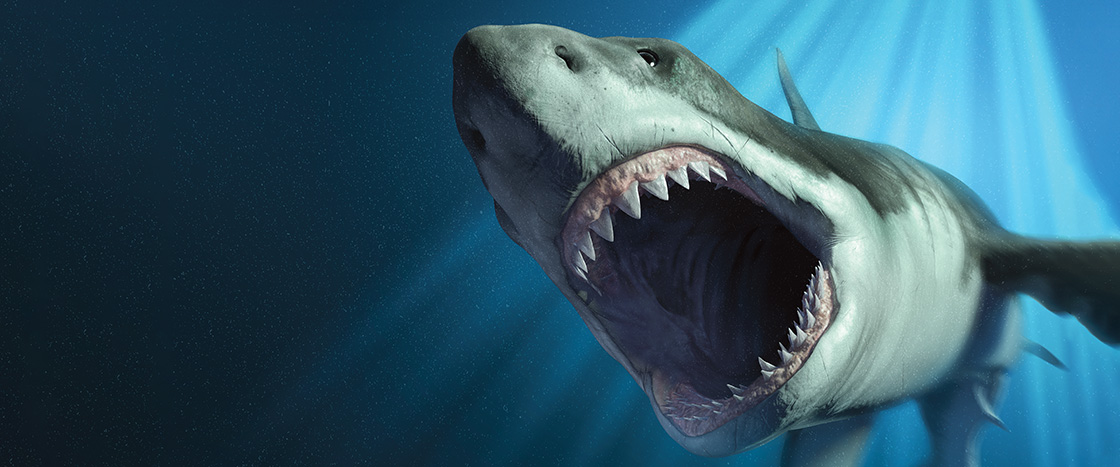The megalodon, or meg for short, was the most massive shark ever to exist. It grew longer than a school bus—more than twice as long as today’s great white sharks. It was a behemoth that would have scared you out of your wits. Its enormous mouth was ringed with more than 200 razor-sharp teeth.
These gargantuan animals died out about 3.5 million years ago. But many of their teeth survived. When a meg lost a tooth, the tooth would sink to the seafloor. Over time, the tooth would harden into a fossil—like the one Molly found.
It’s thanks to these fossils that scientists know about this scary colossus. The shape and size of the meg’s teeth tell us that the animals lived in warm waters, where they feasted on whales, dolphins, and other sharks.

